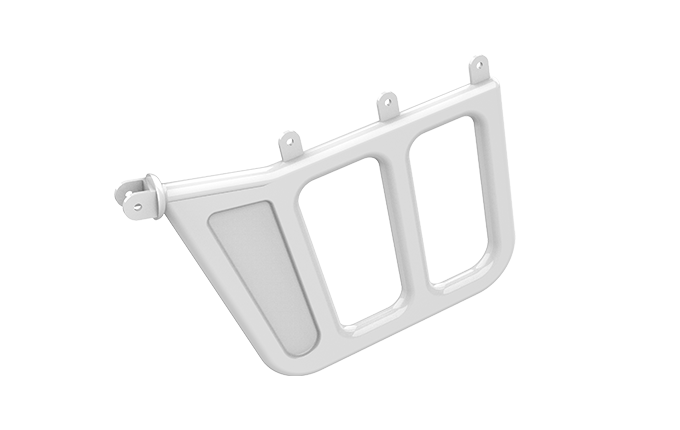If you’re looking for a way to cut through all the red tape in the medical industry, then a laser cutting machine might be just what you need. With its ability to precisely cut through materials, a laser cutting machine can help you quickly and easily create the medical devices and products you need.
In this blog, we’ll show you how to use a laser cutting machine in the medical industry, so you can get started on your next project right away.
What is a laser cutting machine?
A laser cutting machine is a tool that uses a high-powered laser to cut materials. The laser beam is directed at the material, and the heat from the laser melts or vaporizes it, allowing it to be cut. Laser cutting machines can be used to cut a variety of materials, including metal, wood, plastic, and glass.
Laser cutting machines are often used in the medical industry to create prosthetics and other medical devices. They can also be used to create surgical instruments and implantable devices. Laser cutting machines offer a number of advantages over traditional machining methods, including higher precision, higher speed, and lower costs.
How can a laser cutting machine be used in the medical industry?
A laser cutting machine can be used in the medical industry to cut through a variety of materials, including metals, plastics, and glass. Laser cutting machines are precise and can create clean cuts without the need for messy chemicals or other treatments. This makes them ideal for use in the medical industry, where sterilization and cleanliness are of the utmost importance.
What are the benefits of using a laser cutting machine in the medical industry?
There are many benefits of using a laser cutting machine in the medical industry. Laser cutting machines can provide accurate, consistent cuts that can be used for a variety of medical applications. Laser cutting machines can also be used to create custom shapes and sizes, which can be helpful for creating prosthetics or other custom medical devices.
What are the risks of using a laser cutting machine in the medical industry?
There are a number of potential risks associated with using laser cutting machines in the medical industry. One of the most significant risks is the potential for fires. Laser cutting machines create heat as they cut, and this heat can easily ignite combustible materials. In addition, laser cutting machines generate intense beams of light, which can be damaging to the eyes if proper safety precautions are not taken. Finally, laser cutting machines can also produce harmful fumes, which can be dangerous to breathe in.
How can laser cutting machine safety be ensured in the medical industry?

There are several ways to ensure the safety of laser cutting machines in the medical industry:
-Regular maintenance and calibration of the machine according to the manufacturer’s instructions.
-Using eye protection when operating the machine.
-Educating staff on the hazards associated with laser cutting machines and proper safety procedures.
Applications of Laser Cutting Machines in the Medical Industry
Surgical Instruments
Laser cutting machines play a crucial role in the production of surgical instruments. They enable manufacturers to create intricate and customized designs, ensuring precise and reliable surgical tools. Laser-cut surgical instruments offer improved performance, durability, and resistance to corrosion.
Medical Implants
Laser cutting machines are widely used in the manufacturing of medical implants, such as joint replacements and dental implants. These machines can cut intricate patterns and shapes from biocompatible materials, ensuring a perfect fit and enhanced integration with the patient’s body.
Customized Prosthetics
Prosthetics require precise and tailored designs to meet the unique needs of each patient. Laser cutting machines enable the fabrication of custom prosthetics, ensuring a comfortable fit and improved functionality. The flexibility of laser cutting technology allows for the creation of prosthetics with intricate details and complex geometries.
Medical Device Manufacturing
Laser cutting machines are employed in the manufacturing of various medical devices, including catheters, stents, and diagnostic tools. The high precision and speed of laser cutting technology enable efficient production processes while maintaining the quality and accuracy required for medical applications.
Tissue Engineering
Tissue engineering aims to create functional tissues and organs using biocompatible materials and living cells. Laser cutting machines play a vital role in this field by precisely cutting and shaping tissue scaffolds and microstructures. These structures provide a framework for cells to grow and develop into functional tissues.
Research and Development
Laser cutting machines are essential tools in medical research and development. They facilitate the rapid prototyping of medical devices and components, allowing researchers to test and refine their designs before mass production. Laser cutting technology accelerates the innovation process in the medical industry.
Advantages of Laser Cutting Machines in the Medical Industry
- Exceptional precision: Laser cutting machines offer unparalleled precision, allowing for intricate and accurate cuts, even on small or delicate materials.
- Versatility: These machines can work with a wide range of materials, including metals, plastics, ceramics, and biological tissues.
- Time and cost efficiency: Laser cutting technology enables fast and efficient production processes, reducing manufacturing time and costs.
- Customization: Laser cutting machines can create complex and customized designs, catering to the specific needs of patients and medical professionals.
- Minimal heat-affected zone: The localized heating produced by laser cutting machines minimizes the heat-affected zone, reducing the risk of thermal damage to surrounding tissues.
Limitations and Challenges
While laser cutting machines offer numerous benefits, they also come with certain limitations and challenges:
- Material selection: Not all materials are suitable for laser cutting. Some materials may release harmful fumes or gases during the cutting process.
- Initial investment: Laser cutting machines can be expensive, especially those equipped with advanced features and capabilities.
- Operator training: Operating a laser cutting machine requires proper training and expertise to ensure safe and accurate operation.
- Maintenance and service: Regular maintenance and servicing are necessary to keep the machine in optimal working condition and prevent breakdowns.
Future Developments in Laser Cutting Technology for Medical Applications
The field of laser cutting technology continues to evolve, bringing forth advancements that will further enhance its applications in the medical industry. Some of the future developments include:
- Integration with imaging technologies: Laser cutting machines may be integrated with imaging systems, such as MRI or CT scanners, to enable real-time visualization during surgical procedures.
- Improved automation and robotics: The incorporation of automation and robotics in laser cutting machines will streamline the manufacturing processes and enhance efficiency.
- Miniaturization of laser systems: The development of smaller and more portable laser cutting machines will enable their use in various medical settings, including ambulatory care and remote areas.
Conclusion
Laser cutting machines have revolutionized the medical industry by providing precise and efficient cutting capabilities. From surgical instruments to medical implants, these machines have become indispensable tools in the manufacturing and customization of medical devices and components. The advantages of laser cutting technology, such as exceptional precision, versatility, and customization, have contributed to improved patient care and advancements in medical research. As technology continues to advance, we can


